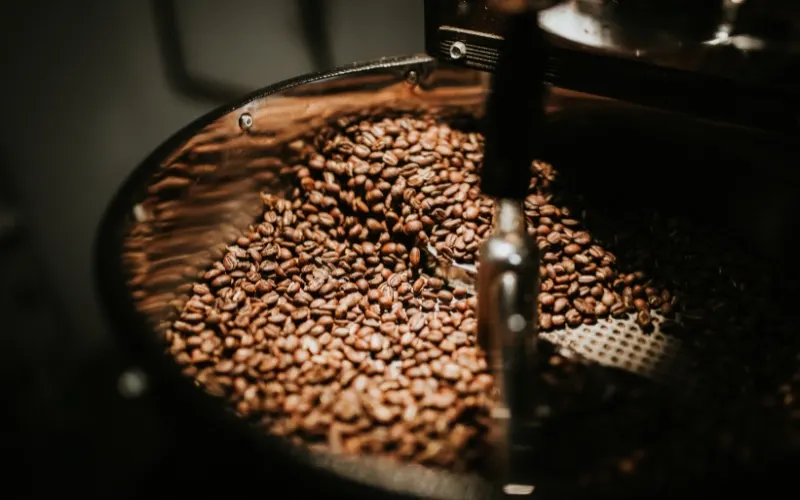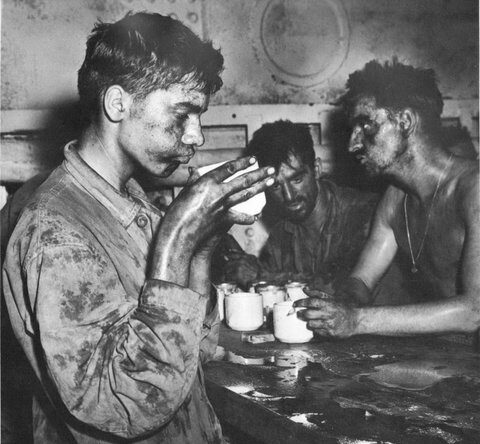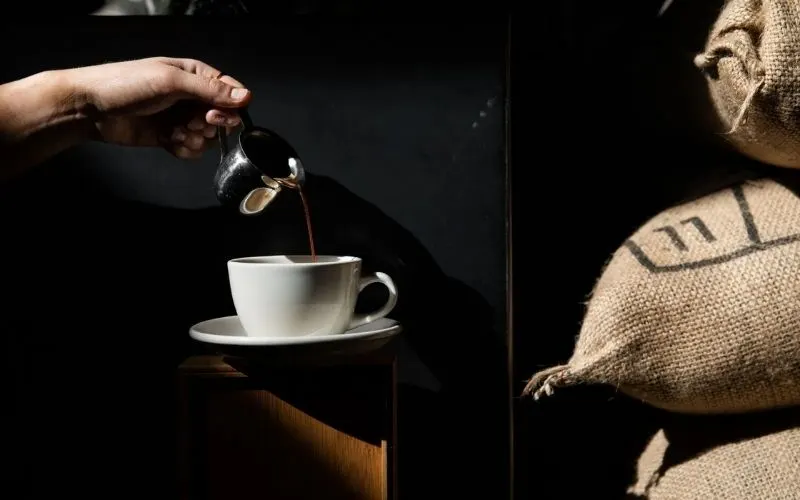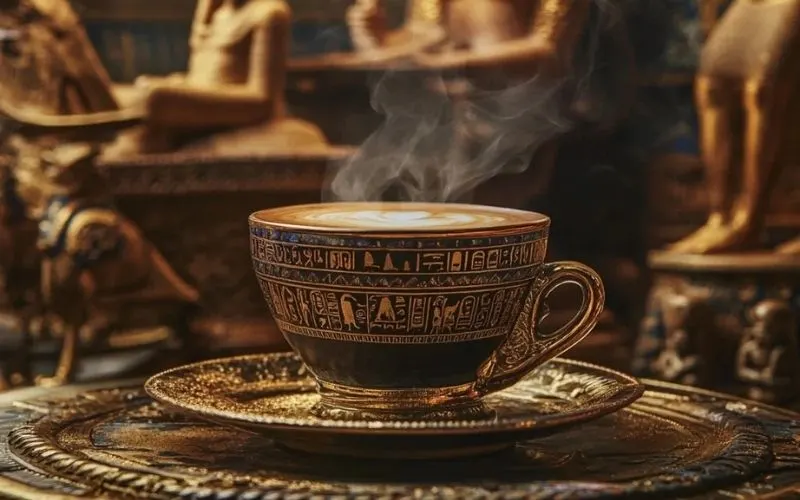
Egyptian Coffee Roasting Methods
10 June، 2025
At El Abed Coffee, We don’t just sell coffee… we preserve heritage while developing it. Egyptian coffee roasting methods are the result of years of experience, combining authenticity with innovation. In this article, we’ll take you on a journey to discover the secrets of traditional coffee roasting, the modern roasting techniques we use at El Abed Coffee, and how roasting affects the taste of your cup.
Roasting Coffee: The Most Important Step in the Coffee Journey
Roasting is the magical step that transforms green coffee beans into aromatic brown beans full of flavors. The secrets of coffee roasting are many, and every roaster has his own style that makes him unique. In Egypt, the art of roasting has a long history, evolving over the years from simple primitive methods to the most advanced global techniques.
“Roasting is not just a step in preparing coffee… it’s art, science, and feeling” – El Abed
Traditional Coffee Roasting Methods in Egypt
Traditional coffee roasting in Egypt carries a unique charm. For generations, coffee was roasted at home or in small roasteries using simple yet effective tools.
The Copper Roaster (Al-Tasa)
The copper roaster, or tasa, is a traditional tool still used for roasting coffee. It’s a flat copper pan with a long handle, placed over low heat, with constant stirring to ensure even roasting.
This method is characterized by:
- Full control over roasting level
- Slow roasting that preserves flavors
- The option of adding cardamom or cinnamon during roasting (for Arabic coffee)
Clay Oven
In some regions of Upper Egypt, coffee used to be roasted in traditional clay ovens. The evenly distributed heat inside the oven ensured consistent roasting and gave the coffee a distinct flavor.
Rotating Charcoal Roasters
At the beginning of the 20th century, rotating charcoal roasters appeared in specialized shops. They were metal cylinders rotating over charcoal embers, ensuring even heat distribution over the beans.
Modern Roasting Techniques: Progress with Authenticity
With technological advancement, coffee roasting techniques have also evolved, introducing new methods that blend scientific precision with the spirit of traditional artistry.
Hot Air Roasting
Hot air roasting is the technique we proudly use at El Abed Coffee. This European hot air roasting method relies on circulating hot air around the beans instead of exposing them to direct fire.
Advantages of hot air roasting:
- Even roasting for every bean
- Reduced acidity and bitterness
- Preserves the original flavors of the coffee
- Reduces acrylamide (a potentially harmful compound formed in traditional roasting)
- Precise control over temperature and roasting duration
Drum Roasting
A common method in large roasteries, it uses a rotating metal drum heated from the outside. It allows roasting large quantities of beans evenly, with control over temperature and timing.
Direct Heat Roasting
Some modern roasteries use direct flames to heat the beans. This method gives a bold and strong flavor but requires great expertise to control the roast and avoid burning the beans.
Coffee Roast Levels: A Flavor for Every Occasion
Different roasting levels bring out different flavors, and each level is best suited to a particular type of coffee and individual taste.
Light Roast (Cinnamon Roast)
Light roast, or cinnamon, has a light brown color, preserving the original flavors of the coffee with clear acidity and fruity, floral notes. Perfect for filtered or drip coffee.
Characteristics of light roast:
- Light cinnamon-brown color
- Dry bean surface (not oily)
- Bright acidity and fruity flavors
- Higher caffeine content
Medium Roast
The most popular roast in Egypt, medium roast offers a perfect balance between original coffee flavors and roasted notes. Suitable for Turkish coffee, espresso, and French press.
Characteristics of medium roast:
- Medium brown color
- Slight oil appearing on the surface
- Balance between acidity and bitterness
- Chocolate, nut, and caramel notes
Dark Roast
Dark roast beans have a deep brown color, with bold flavors of dark chocolate and caramel, along with a touch of bitterness. Ideal for espresso and strong Turkish coffee.
Characteristics of dark roast:
- Dark brown, close to black
- Oily, shiny bean surface
- Strong flavors with low acidity
- Heavy body and creamy texture
Italian Roast (Very Dark)
The darkest roast level, Italian roast, is almost black with intense flavor and noticeable bitterness. Traditional Italian espresso lovers often prefer it.
Characteristics of Italian roast:
- Very dark brown, almost black
- Very oily surface
- Burnt, sweet notes
- Very heavy body with strong bitterness
How Roasting Affects Coffee Flavor: The Science Behind the Art
During roasting, complex chemical reactions occur inside the bean, transforming its composition and creating hundreds of aromatic compounds that give coffee its signature flavor.
Key reactions during roasting:
- Maillard Reaction: between sugars and amino acids, producing aromatic compounds and brown color.
- Caramelization: sugars break down into caramel, adding sweetness and darker color.
- Moisture Evaporation: water inside the beans evaporates, causing expansion and cracking.
- Carbon Dioxide Release: CO₂ forms inside the beans and continues escaping for days after roasting.
Factors affecting roasting quality:
- Temperature control: essential for even roasting
- Roasting time: slow roasting allows better flavor development
- Constant stirring: ensures all beans roast evenly
- Rapid cooling: necessary to stop roasting at the right time
- Quality of raw beans: no matter how precise the roast, quality beans are the foundation
Home Coffee Roasting: Art at Your Fingertips
Roasting coffee at home can be fun and rewarding. While the results may not match professional roasteries, it’s a great way to explore different roast levels.
Home roasting tools:
- Pan: the simplest method, using a pan over low heat with constant stirring
- Oven: roasting beans in a tray with occasional stirring for even results
- Home roaster machine: small devices designed for home use, available in different prices and technologies
Tips for home roasting:
- Start with a Small Batch (around 100g) for Easy Control
- Use low heat and stir the beans constantly.
- Listen for the first and second crack, which indicate different roasting stages.
- Prepare a wide container to cool the beans immediately once they reach the desired roast level.
- Let the beans rest for 12–24 hours before grinding and brewing.
Preserving Coffee Quality After Roasting
Maintaining quality during roasting isn’t enough… the way you store your coffee afterward is just as important to preserve its flavor and aroma.
Packaging & Storage
At El Abed Coffee, we use airtight packaging with a one-way valve that allows CO₂ to escape while preventing air from getting in. This keeps the coffee fresher for a longer time.
Tips for Storing Roasted Coffee:
- Use airtight containers.
- Keep coffee away from light, heat, and humidity.
- Avoid storing coffee in the fridge (it absorbs odors).
- Buy only enough for 2–3 weeks of use
- Grind coffee just before brewing.
Roasting Technique at El Abed Coffee: Excellence & Innovation
At El Abed Coffee, we combine traditional expertise with the latest global roasting technologies. Our European hot-air roasting technique is the result of years of research and development, ensuring you a truly exceptional coffee experience in every cup.
Key Features of El Abed Coffee Roasting
- Careful Bean Selection: We source only the finest beans from their origins and reject any that don’t meet our high standards.
- Hot-Air Roasting: This method preserves the coffee’s flavor while reducing acidity and bitterness.
- Precise Temperature Control: Our roasters are equipped with advanced systems that regulate both temperature and roast duration.
- Rapid Cooling: Beans are cooled quickly after roasting to lock in flavor.
- Fresh Delivery: We guarantee every batch reaches you as fresh as it left the roastery.
- Variety of Roast Levels: From light to dark, we offer roast profiles to suit every taste and brewing method.
Frequently Asked Questions About Coffee Roasting
What is the best way to roast coffee?
There’s no single “best” method—each has its advantages. Hot-air roasting offers precision and consistency, while traditional roasting provides a distinctive flavor. The best method depends on the bean type, brewing style, and personal preference.
How does roasting affect coffee flavor?
Roasting dramatically shapes coffee’s taste. Light roasts preserve the bean’s natural flavors and bright acidity, while dark roasts bring bold chocolatey and caramel notes with a touch of bitterness. Choosing the right roast depends on your taste and brewing style.
What’s the difference between traditional and modern roasting?
Traditional roasting relies heavily on craftsmanship and intuition, often using simple tools like copper pans or clay ovens. Modern roasting, on the other hand, leverages technology for precise control of time and temperature, using advanced equipment like hot-air roasters or drum roasters.
How do I know the right coffee roast level for me?
The ideal roast level depends on your personal taste and brewing method:
- If you enjoy fruity flavors with a bright acidity, go for a light roast.
- If you prefer a balance between acidity and sweetness, medium roast is perfect for you.
- If you love bold coffee with chocolatey and caramel notes, dark roast is the way to go.
Can coffee be roasted at home?
Yes, you can roast coffee at home using simple tools like a pan or an oven, or with a home coffee roaster. However, home roasting requires trial and patience, and the results won’t match the precision and consistency of professional roasters.
In the end…
Egyptian coffee roasting methods are a blend of art, science, and expertise. At El Abed Coffee, we combine authentic traditions with modern techniques to offer you an exceptional coffee experience in every cup.
From selecting the finest beans, to roasting them with advanced European hot-air technology, to carefully packing and delivering them fresh—every step is done with passion, love, and expertise. That’s why our coffee is not just a drink… it’s an experience that awakens all your senses.
Visit the nearest El Abed Coffee branch and enjoy an authentic Egyptian coffee experience, roasted with the expertise of the “Happiness Merchant.”
El Abed Coffee… We work hard so you never sleep.
Did you enjoy this article? Share it with your coffee-loving friends and follow us on social media for more insights and tips from the world of coffee.
Discover our coffee products | Connect with our coffee experts



